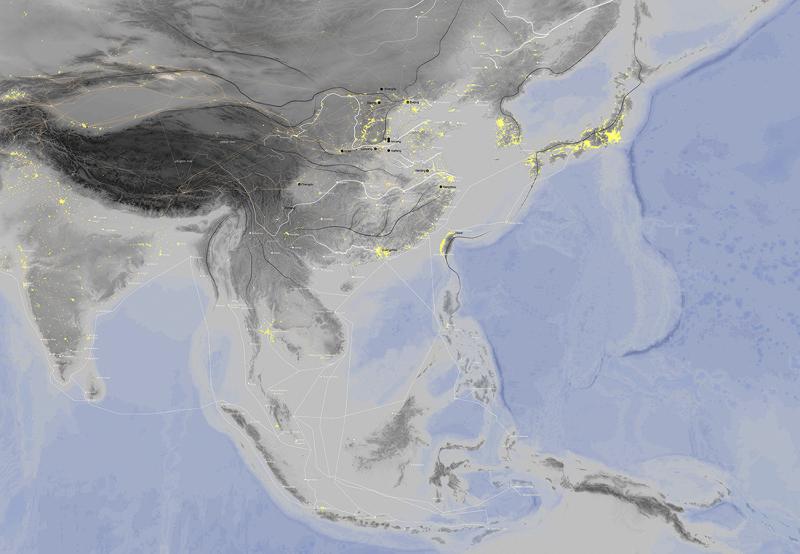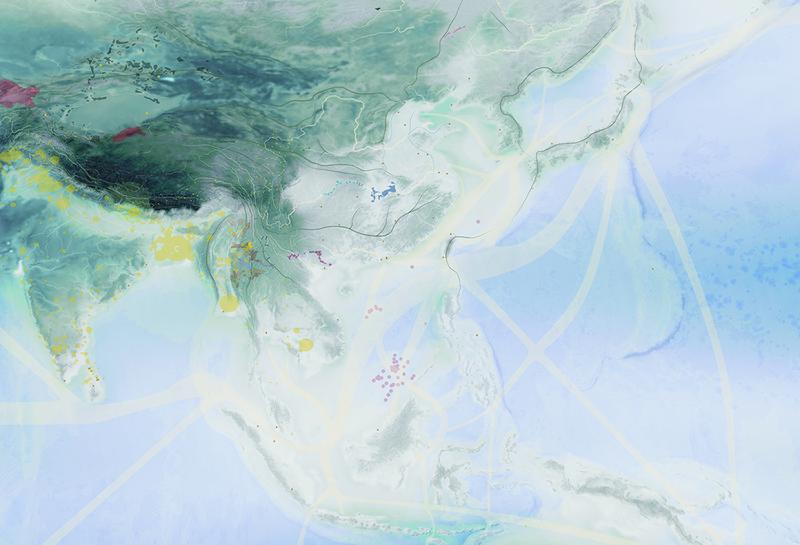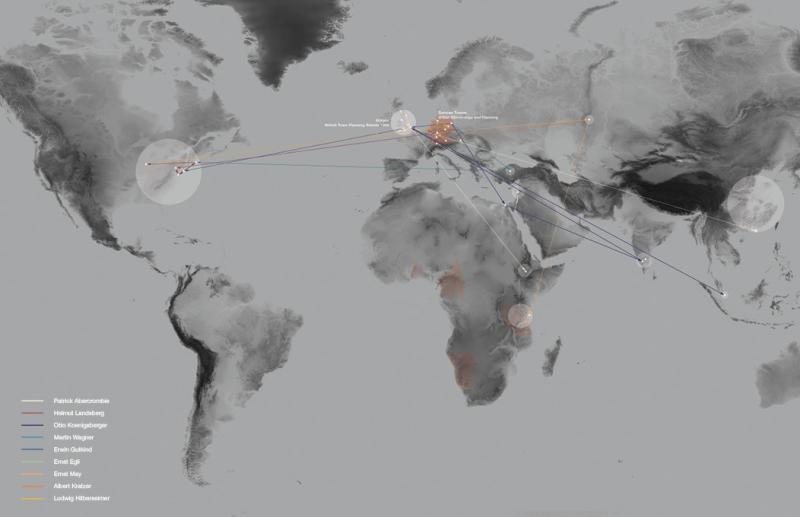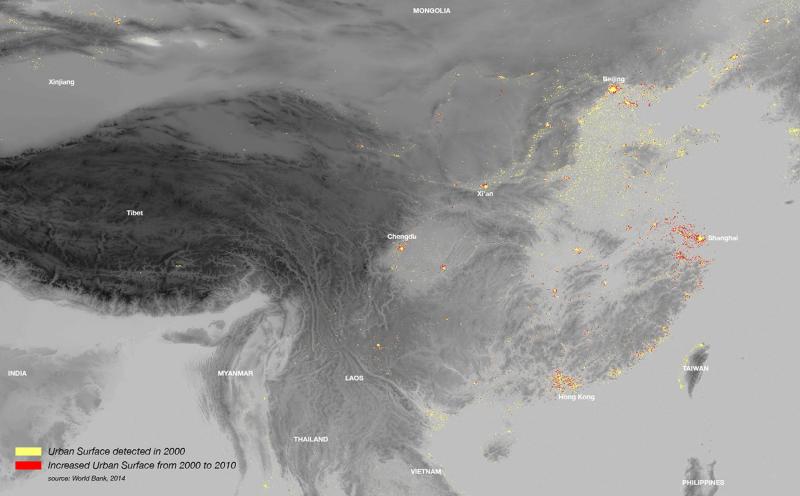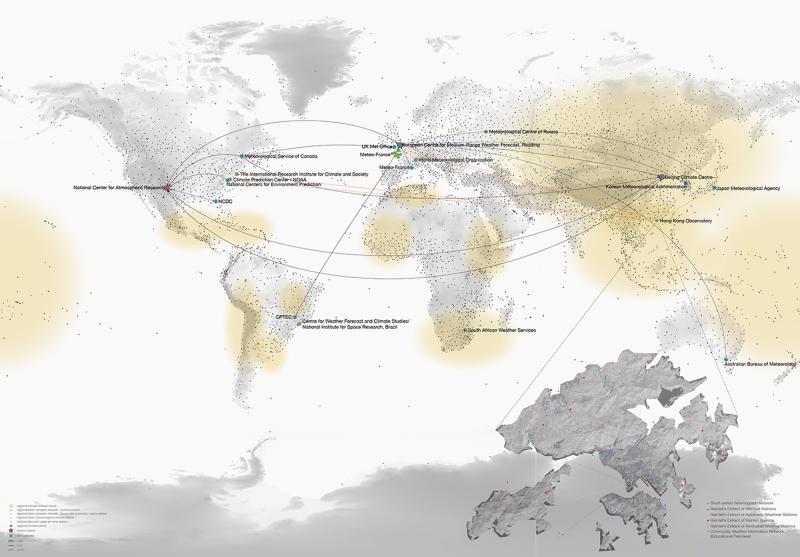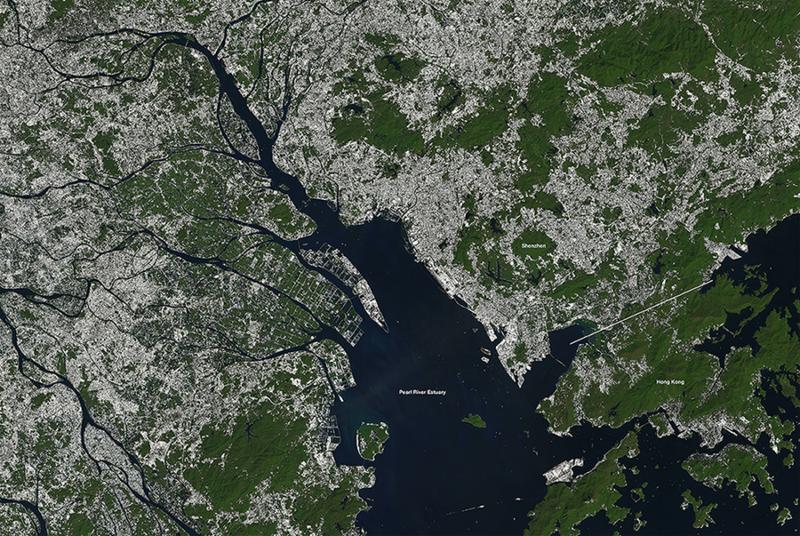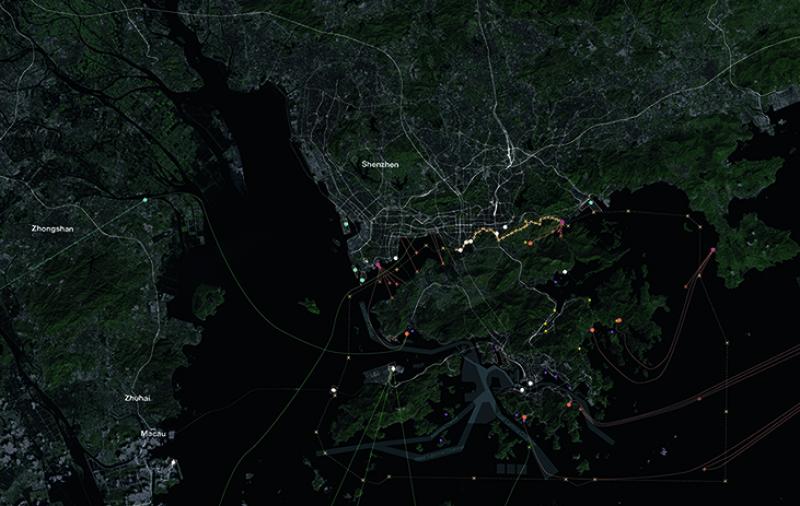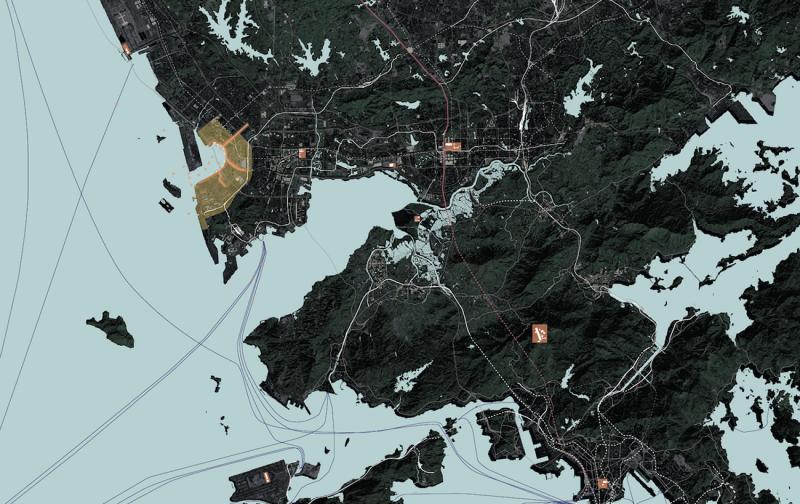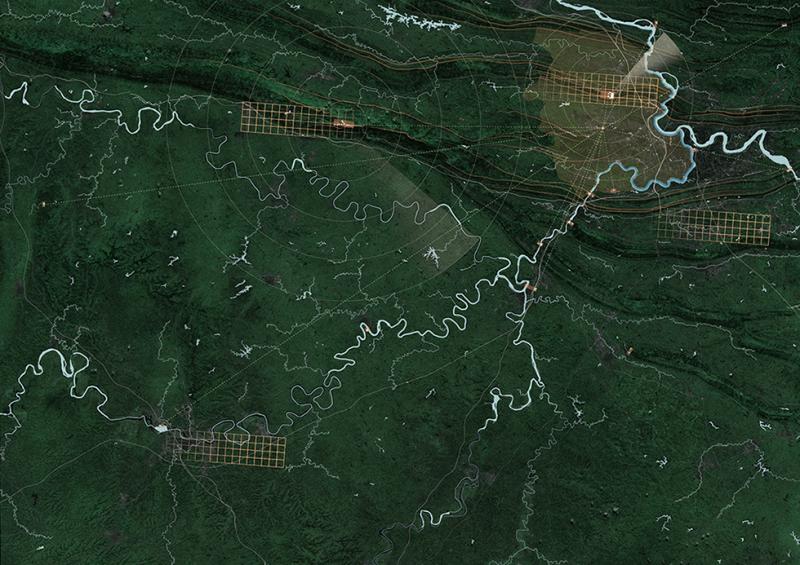The Middle Kingdom
The Chinese fengshui knowledge informs an ideal condition for human dwelling: one should always settle in the middle, between highlands (at the back) and overlooking water in front. The black dots indicate locations of historical capitals of China, and they are always around the flat land that is known as the Middle Kingdom of China. This imperial system pushes Hong Kong over the edge of the Kingdom, while exposing it alternatively to the European system of scientific navigation, as well as multiple systems of knowledge from its neighbouring countries and territories.


